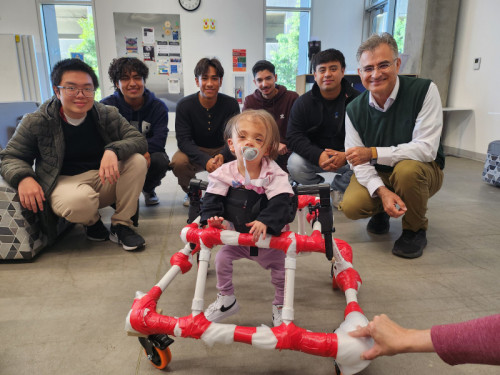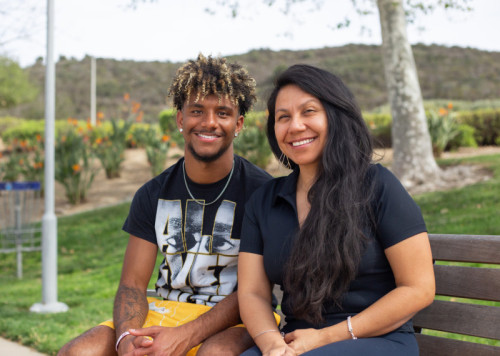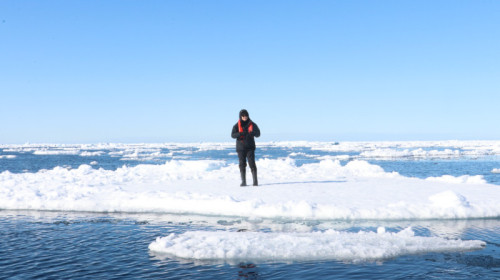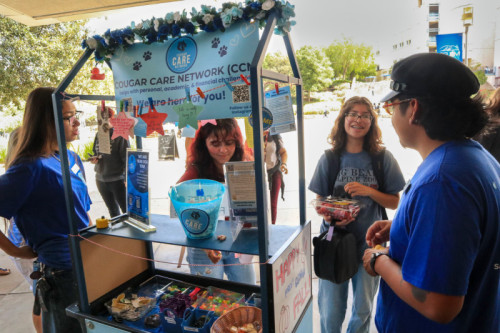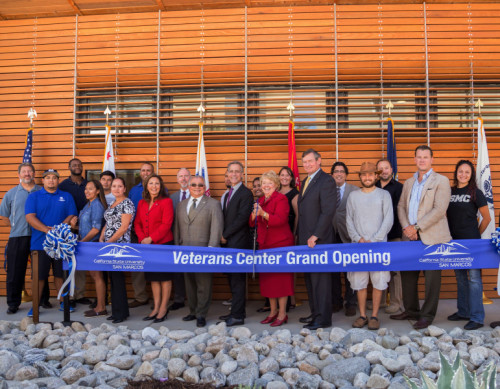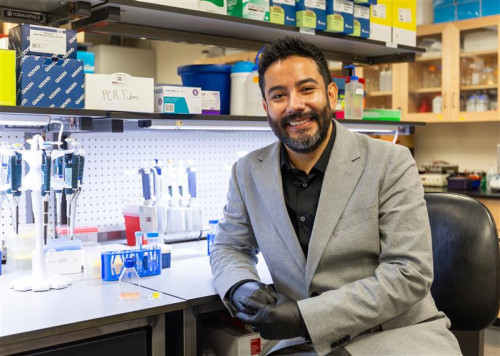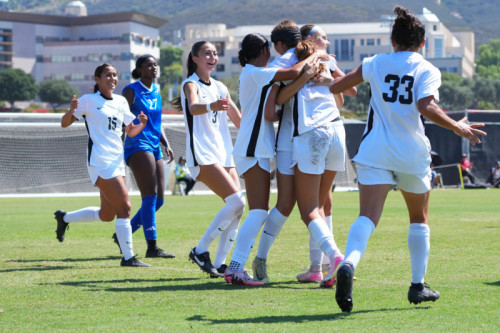Collaborative Effort Helps SLP Alumna's Daughter
05
June
2025
|
07:00 AM
America/Los_Angeles
"; items += "
"; items += "
"; items += "
" + val['title'] + "
"; if(val['subtitle']){ items += "
" + val['subtitle'] + "
"; } items += "
"; if ((val['showpublishdate'] !== 0 && showPublishDateHeadlineSetting) || showPublishCityHeadlineSetting) { items += '
'; if (val['publishcity'] && showPublishCityHeadlineSetting) { items += '
' + val['publishcity'] + '
'; } if (val['showpublishdate'] !== 0 && showPublishDateHeadlineSetting) { items += "
"; items += "
" + date_month + "
"; items += "
" + date_day + "
,"; items += "
" + date_year + "
"; items += '
'; items += ' | '; items += '' + val['publish_time'] + ''; items += 'America/Los_Angeles'; items += '
'; items += '
'; } items += '
'; } items += "
" + val['message'] + "
"; items += "
Read more
"; items += "
"; items += ""; items += tags_items; items += multimedia_count; items += "
Latest Newsroom
- Faith, Resilience Help Athlete Through Life-Threatening CrisisIt all started with a headache. A seemingly normal ailment, but Malachi Wright doesn’t get headaches. And he definitely doesn’t get headaches that force him to leave work early or have him confined to the couch and throwing up for three straight days. That's when his mom, Ivonne Mancilla, knew this was something more. It was the summer of 2023. Wright – who had just completed his second year at Cal State San Marcos, where he plays for the men’s soccer team – was experiencing pain like he had never felt before. “He has a high pain tolerance,” Mancilla said. “I started noticing how much he was sleeping and how he was walking very fragile. I realized it wasn’t a normal headache.” On the third day of the headache, Mancilla took Wright to urgent care. Doctors treated it as a migraine, giving him some medication and sending him home. But the pain continued to be unbearable. Wright told his mom that he felt like he was dying. On day four, Wright went to the emergency room. It saved his life. Wright spent the next 40 days in the hospital, undergoing three brain surgeries with no idea what the future would bring. No certainty if he could return to school, let alone soccer, his passion from the time he was a young child. But Wright defied all odds. “I hope to get my story out to people so that they can see anything is possible,” Wright said. “I am trying to bring people inspiration and give glory to God. That was my thing in the hospital, having faith and staying faithful to God, knowing that I'll be OK and he's got me.” Wright was guided by his faith throughout his hospital stay. He and his mom prayed throughout the journey, and she kept a bible verse at the edge of her son’s bed that they read every day as he fought for his life. It’s Psalm 30:2: Lord my god, I called to you for help, and you healed me. Those prayers began virtually the moment Wright arrived at the emergency room. A CT scan showed that his brain was filling with fluid, and an MRI revealed a cyst in the third ventricle of his brain. When a neurosurgeon came to review Wright’s scans, she was horrified. No one had informed her of his highly critical state. He was dying. “They said his brain was like a balloon and that it could burst at any moment,” Mancilla said. “I had to sign a paper giving them permission to go in and drain his brain immediately because he could have brain damage or die.” There was not space available or time to get Wright into an operating room. Instead, ICU nurses rushed into his room to assist the neurosurgeon, who numbed and drilled a hole in Wright’s head to drain the fluid. Doctors initially wanted to place a permanent shunt in Wright’s brain. Mancilla was a fierce advocate for Wright throughout his hospital stay, earning the nickname “Bulldog” from nurses. She was resistant to the shunt, worried it would affect Wright's ability to pursue his dream of becoming a firefighter. After she expressed her concerns, the lead neurosurgeon opted for a temporary shunt instead. Wright was in and out of consciousness for much of his time in the hospital, but a strong support system – including his mom, his aunt Vanessa, members of the family’s church, and coaches and teammates from CSUSM’s soccer team – played a crucial role in helping him through the process. The constant stream of visitors led Mancilla to discover the positive impact that Wright has had on so many people. His manager at Casero Taqueria, where he still works, reached out to Mancilla asking for permission to start a GoFundMe. The community raised $14,000, the exact amount needed to cover the family’s maximum out-of-pocket medical costs. “I didn't realize how many people Malachi has impacted,” Mancilla said. “Sometimes as a parent, you don't get to see all that until these types of things happen. Sometimes we focus a little too much on what they're doing wrong and not on all the other good things that they're doing that maybe they don't tell you about. “I told him, ‘This is all because of the seeds that you've planted out in the world, and this is how it's all coming back to you. So continue to be who you are.’ I am so proud of that. I was such a proud parent.” Wright endured three brain surgeries during his hospital stay. The first removed the majority of the cyst, the second cleared residuals of the cyst and the third addressed blood clots. It was a physically and mentally draining process. After the first surgery, Wright was temporarily paralyzed on his left side. He couldn’t sleep and was in constant agony. “It was the worst pain I felt in my life. It was excruciating,” Wright said. “It was really hard. I was confused, wondering where I was. It was a lot of scary stuff.” It wasn’t until Wright’s 35th day in the hospital that Mancilla felt like her son would be OK. His pain levels were reduced and he could walk again. But the biggest sign to Mancilla that Wright was doing better? He asked for his phone, which he hadn’t been able to use for most of his hospital stint. Though Wright’s pain was finally under control, other challenges remained once he left the hospital. He underwent cognitive, physical and speech therapy. Doctors expected the recovery process to take two years, but Mancilla knew her son had the fortitude for a quicker recovery. She could see that Wright was capable of more than he was initially allowed to do in the rehabilitation process, and her tireless advocacy paid off. Wright returned to CSUSM in the fall of 2023, just months after his hospital release. He eased back in by taking one class before increasing his load to three courses in spring 2024. He is grateful for the support he received throughout this time from coaches, teammates and athletic department staff, also noting the important role that CSUSM’s Disability Support Services played in helping him return to the classroom. A little more than a year after his three surgeries, Wright was back as a full-time student and soccer player. Wright didn’t just settle into classes, he thrived in them. He received a 4.0 grade-point average, making him the highest academic performer on the soccer team. “Not only did he heal perfectly, he's a better version of himself,” Mancilla said. “He turned something that caused him so much pain into good. He continues to make good choices for himself. He uses that painful experience and turns it into good.” That includes his efforts on the soccer field. Returning to the sport he loves was an impressive milestone for Wright, especially because it was considered virtually impossible just months earlier. Perhaps the most powerful moment of the 2024 season came in a match against Biola University. As the first half was winding down, Wright scored his first goal since the health scare. Mancilla, who never misses a game, ran down to the field. Coaches welcomed and hugged Mancilla as she rejoiced over the milestone. “It was a great, raw moment of emotion, love and gratitude,” said Ron Pulvers, CSUSM’s men’s soccer coach. “An experience I will never forget. “Malachi is a tireless worker in all aspects of life. He lives our core value of unconditional gratitude at the highest levels and lives his life with unequalled faith.” Wright is back on the field this fall as he continues work toward a bachelor’s degree in human development. He is scheduled to graduate in fall 2026, with an ambition of becoming a firefighter. While his time spent in the hospital was scary, the support he received helped him overcome adversity and his faith helped him remain positive. He now uses his experience to encourage others and push himself to perform the best he can. “People meet Jesus at the end of the rope. And that was the end of my rope,” Wright said. “Going through this whole experience with my brain really changed my perspective on life and it changed my character as a man.” Media Contact Eric Breier, Interim Assistant Director of Editorial and External Affairs ebreier@csusm.edu | Office: 760-750-7314
- Professor Blends Art, Science on Summer Trip to ArcticFor Judit Hersko, a two-week voyage to the Arctic Circle last summer was more than a bucket-list adventure. It was the continuation of a two-decade career turn toward venturing to – both physically and emotionally – some of the coldest, most remote places on Earth and exploring the fascinating ways that art and science intersect. Hersko, a longtime Cal State San Marcos professor who’s chair of the art, media and design (AMD) department, is back on campus this semester as she digests the discoveries she made on her summer sojourn to Svalbard, a Norwegian archipelago between mainland Norway and the North Pole. How far-flung is it? After traveling the 5,400 miles from San Diego to Oslo, you’re still about 1,300 miles from your destination. In Svalbard, Hersko boarded a sailing ship called the Rembrandt van Rijn (named for the famous Dutch painter) that was chartered by The Arctic Circle, an annual expeditionary residency program for artists and scientists from around the world. With 29 other people – a mix of visual artists, writers, composers and science communicators – Hersko sailed down the west coast of Svalbard before the ship left the land behind and pointed northwest into the thick ice of the Arctic Ocean. “That was really exciting because it was a real North Pole feeling,” Hersko said. “The captain discovered this really large chunk of ice that was 20 kilometers. We moored to it, and it was sort of like mooring to land, except it moved.” During her time at sea and on the ice, Hersko gathered material that she will use for her unique brand of artwork that she calls performance lectures. These are tightly timed presentations of narratives grounded in historical and scientific research that are accompanied by visual images, including the artworks that she creates – her specialties are sculpture and installation that also incorporate photography and collage. “I build complex narratives that are basically true to life, except that I weave in a fictitious character who helps hold the story together,” she said. It’s an approach to art that was born of Hersko’s early years at CSUSM, and a life-changing trip to the globe’s opposite pole. In 2003, when she was hired at CSUSM, she sent a letter to colleagues on the science faculty telling them that she was interested in collaborating on projects. One of the most enthusiastic responses came from Victoria Fabry, a biological sciences professor whose scholarly work explored the effects of ocean acidification. Hersko and Fabry teamed up on an exhibit titled “Shifting Baselines” that translated the scientist’s research into visual art (it proved so impactful that it has been exhibited multiple times nationally, most recently last year in the San Diego Central Library). In 2006, Fabry went on a scientific trip to Antarctica and she came back raving about it, urging Hersko to apply for a program that brought artists there. Hersko did just that two years later. On a completely funded expedition as part of the extremely competitive National Science Foundation Antarctic Artists and Writers grant program, she spent six weeks in Antarctica, where she watched penguins hatching at her feet, studied planktonic snails and assembled the research material that guided her work for many years, exhibitions, presentations and book chapters to come. Specifically, she crafted narratives that centered around a fictitious, unknown female explorer, Anna Schwartz, who travels to Antarctica disguised as a man on the 1939 expedition led by American naval officer Richard E. Byrd. Though her protagonist is invented, Hersko said, “my work builds on meticulous research, and I place her in real historical events. These layered stories present the complex history of science highlighting the absence of women from the narratives of exploration as well as science.” Hersko isn’t the only School of Arts faculty member who has been to the frigid poles on a research excursion. In 2023, AMD professor Lucy HG Solomon received a prestigious Fulbright scholarship and did part of her research on Svalbard, where she furthered her ongoing studies of microorganisms and how they connect to the world. Solomon’s experience in the Arctic, in turn, led to a rare opportunity for one of her students. Last year, she connected AMD student Leobardo Moreno Villanueva with an ecologist at a Svalbard university, and Villanueva worked with the scientist on a graphic design project in which he helped make technical signage describing the scientific equipment used for research in the Arctic. Villanueva, a former foster youth from Mexico for whom English is his third language, graduated from CSUSM last spring. “Designing for the far north was an unforgettable challenge that expanded my perspective on how art and science meet in unexpected places," Villanueva said. As for Hersko, she knows several people in the small circle of polar researchers who have traveled with The Arctic Circle program, but she could never find the right time until this year. On July 4, she landed in Longyearbyen, a small town known for coal mining (though the last mine closed a few days before her arrival) and its views of the Northern Lights. After a few days to acclimate, she boarded the Rembrandt van Rijn to begin the two-week voyage. Among the highlights of her time at sea was up-close viewings of two polar bears, the tragic sight (and thunderous sound) of ice falling from stunning glaciers, and the discovery of tiny flowers and lichens that she thinks she will incorporate into her next output of art that results from this latest trip of a lifetime. “When I get fascinated by something, often it turns out that things come together in a weird, magical way where it has relevance,” Hersko said. “It’s all still percolating, and I think it’s probably a story that I will develop in the next year.” Media Contact Brian Hiro, Communications Specialist bhiro@csusm.edu | Office: 760-750-7306
- Cougar Care Network Marks 10 Years as a Campus Hub for ConnectionBuilt on listening first and guiding without judgment, the Cougar Care Network enters its second decade as a trusted stop for students seeking practical help, community and a path forward. The Cougar Care Network (CCN) launched in fall 2015 as part of Cal State San Marcos’ Early Support Initiative within the Student Outreach and Referral (SOAR) program. Patty Diaz worked in Student Affairs and was the SOAR coordinator. Today, Diaz is the coordinator of CCN. “It’s an incredible feeling to witness something you’ve helped build flourish,” Diaz said. “I’m proud of what Cougar Care Network has become and the positive reputation it has gained among students, faculty and the entire campus community. Together we are making a real difference in the lives of students.” SOAR was the primary referral source for faculty teaching first-year and underserved students. It operated like a concierge: students visited the office, where they were routed to other campus support systems, such as counseling or academic services. In fall 2016, SOAR rebranded as part of CCN. Today, CCN is a trusted place for students to build community while at CSUSM. “It’s fantastic,” said Donna Davis, CCN director. “It’s wonderful that the university has embraced us so much. And students know enough about us to walk right in with anything on their minds, knowing they can get some help. So we are honored by that every day.” Davis joined CCN in 2022 and became the program's director in 2023. “This team, they care so deeply,” Davis said. “We have a very dedicated group of professionals here that are creative, energized and excited to help students. I am so beyond honored to work with this group, and that is what’s kept me here through it all.” As CCN has grown over the past decade, so has the number of students it serves. During the 2024 academic year, it managed 4,620 student cases, a 58% increase from the previous year, according to CCN. There were an average of 20 new cases each day, and students expressed appreciation for the ease of being able to drop into the office to get immediate help with their concerns. While CCN does not offer long-term therapy, a majority of the cases involve mental health. The staff can provide advice and resources for issues like day-to-day anxiety, the stress after failing a test, or the emotional rollercoaster of going through a breakup. The team also helps students take their first step toward visiting counseling services on campus. “We spend a lot of time walking beside students until they are ready to take that step,” Davis said. Visiting CCN is easy and accessible. Students can email or submit a referral form to schedule a visit, or drop in to Administrative Building 1200, Monday-Friday from 9 a.m. to 5 p.m. Professors can refer students and an assigned staff member will reach out to the student to check in and invite them to visit. “Once we connect with them, we’re always going to make that person feel as comfortable as they can,” Davis said. One way CCN helps students feel comfortable during their visits is by offering a treasure chest in the office. Filled with items like facial masks, notebooks, fidget toys and mugs, the treasure chest began as a form of staff appreciation and evolved into a fun activity for students to engage with during their visits. The treasure chest also offers students the opportunity to visit the office and become familiar with the staff while they’re still deciding if they’re ready to talk to someone. Another entry point is the Cougar Care Network cart, introduced in the fall of 2023. The cart is operated by service-learning students as an informal, peer-to-peer way for students to learn more about the program and build connections at CSUSM, so they know support is available. “We are students ourselves. We’re not faculty or staff,” said Fernando Vasquez Rendon, a fourth-year psychology major and service-learning student with CCN. “Knowing that we’re also students adds a sense of trust and relatability.” Vasquez Rendon said he understands why some students may feel nervous about approaching the cart, and encourages them to interact with it and see what it has to offer. He said students often express gratitude for the cart, those who work it, and the free items and resources it carries. “Please, come up to the cart. We’re always happy to chit-chat,” he said. “I’m always open and I really want students to know that I and the team are here to really listen and support.” “One of the best parts is seeing a student for the first time and their interaction with the cart. Those interactions are what make this role beautiful, and I think those moments are really important.” CCN also uses the cart as a tool to help students connect with the University Student Union centers. For example, Davis explained that for students curious about the Pride Center but hesitant to walk alone, the card serves as a bridge, as students might walk into the center when the cart is there. “We know that there needs to be this kindness movement right now,” Davis said. “We know students are isolated and lonely. And regardless of how much social media they have — and the people they can connect with online — they’re still feeling alone on the inside. So the cart was started as a way to go over to students who are sitting alone and introduce them to the cart, because sometimes that’s the only person that student may talk to all day.” Lizet Palestina, another service-learning student with the CCN and a criminology major in her final semester, shared how she uses the cart to start conversations with students sitting alone. “I think it’s easier for students to talk to us, rather than a staff member,” Palestina said. Once the conversation is underway, Palestina and other service-learning students take the opportunity to inform students about campus resources, such as the CCN, Student Health and Counseling Services (SHCS), the Cougar Pantry and workshops. “There are a lot of students who are by themselves, and sometimes they’ll be nervous. But once you get the conversation going, they’re a lot more open,” she said. “It’s as simple as asking if they want a little duck, and then you keep the conversation going.” The mini ducks are one of the main reasons students approach the cart. Vasquez Rendon said it's common to see students visiting the cart to add more ducks to their collection. The ducks serve as a small symbol to remind students that they’re not alone. “Put it in your pocket, keep it in your book bag. But take it out and physically hold onto it as a reminder that we believe in you and know that you got this,” Davis said. Along with the standard mini ducks, CCN also releases special edition ducks for campus events. During a Commuter Breakfast event, the cart featured ducks in cars. In a previous collaboration with SHCS, a duck in a fry basket was offered in reference to the F.R.I.E.S. program on consent. F.R.I.E.S. describes consent as something freely given, reversible, Informed, enthusiastic and specific. CCN also rotates the cart's theme and available items based on cultural events and student feedback. Vasquez Rendon shared that the team is working to update the cart's theme for Dia de los Muertos and to provide cultural information about the holiday. “The cart is always changing as the student population changes,” he said. “I want students to know that the conversations we have don’t fall on deaf ears. If they bring up questions, comments or concerns, I always relay it back to the team.” Alongside the service-learning students, CCN also has a staff of Master of Social Work (MSW) interns who provide support to students. Vasquez Rendon plans to apply to the MSW program for the fall 2026 cohort. Davis shared that community donations and grant funding are crucial to ensuring that CCN can provide students the support they need. CCN is a part of the university's Community of Care program, an intentionally connected network to support students that was made possible by a generous grant from the Conrad Prebys Foundation. CCN also received philanthropic funding from a San Diego Foundation mental and behavioral health-focused grant to be able to staff MSW interns. “We’ve been very blessed with the grants, and they allow our MSW interns to dedicate their full attention to the students," Davis said. Community donations often help stock the treasure chest at the Cougar Care Network office. Davis said they are always welcoming new or gently used physical donations and added that students donate items like candles, facial masks and other small gifts they no longer need. Ten years in, CCN remains focused on simple ideas that matter, starting with a warm welcome and practical help that arrives when students need it. The aim is to walk beside each person until the next step feels possible and the path forward is clear. “We’re here to walk beside you,” Davis said. “And if you’re not ready today, no worries. Maybe you’ll chat with somebody at the cart or follow us on Instagram. Just in case you need us, we’re here.” Media Contact Eric Breier, Interim Assistant Director of Editorial and External Affairs ebreier@csusm.edu | Office: 760-750-7314
- In Memoriam: Josh Pack (’97), a Life of Leadership, Generosity and HeartCal State San Marcos is mourning the passing of distinguished alumnus Joshua Pack ('97), who died on Sept. 29. A devoted husband and father, proud Cougar, and tireless advocate for veterans and students, Pack leaves behind a legacy defined not only by professional success but also by kindness, humility and a deep commitment to helping others. Pack’s path to CSUSM wasn’t straightforward. After beginning his higher-education journey at the U.S. Air Force Academy and transferring to another university, he eventually found his home at San Marcos, where he earned a bachelor’s degree in economics in 1997. He often credited a CSUSM economics professor with transforming his academic trajectory and helping set the foundation for his career. Professionally, Pack rose to become co-CEO of Fortress Investment Group, one of the world’s leading investment firms. Over more than two decades, he built a reputation as a leader in credit and real estate investing, overseeing billions of dollars in assets and guiding teams through complex financial markets. Pack’s connection to CSUSM remained strong long after graduation. He gave his time and expertise as a member of the CSUSM Foundation Board from 2011-16, including service on the Fundraising Committee, where his vision helped strengthen the university’s philanthropic efforts. He also supported the Finance Society by offering real-world insights to students preparing for their own careers. Pack’s passion for serving veterans was rooted in his upbringing as the son of Lt. Col. A.J. Pack, a U.S. Marine Corps officer who served for 22 years. Like Josh, Lt. Col. Pack served as a director of the CSUSM Foundation Board (2015-21). In his father’s honor, Josh established the Lt. Col. A.J. Pack Veterans Scholarship at CSUSM, supporting military-affiliated students in pursuing their educational and career goals. He also championed the creation of a veterans and military center on campus, which broke ground in 2013, calling the work “enormously gratifying for me and my family.” In 2014, he partnered with the Veterans Center and Associated Students, Inc., to host the campus premiere of “The Hornet’s Nest,” a documentary about American troops in Afghanistan. The event included a post-screening Q&A with military units and filmmakers, underscoring his belief in the importance of recognizing and supporting student veterans. In 2021, Pack reflected on his connection to CSUSM in an article on the Fortress website, noting how meaningful it was to help create a leading center for veterans and active-duty service members at the university. “The CSUSM veterans community has earned not just our thanks, but our commitment to support their dreams,” he said. Pack will be remembered for the generosity he showed to his alma mater and to the veteran community that meant so much to him. Through the Lt. Col. A.J. Pack Veterans Scholarship, his support of campus programs and his advocacy for military-connected students, he built a legacy of service that will continue to impact lives for years to come. Pack is survived by his wife and their four children. “Josh was a true partner in our mission of student success,” CSUSM President Ellen Neufeldt said. “He had an unwavering belief in the power of education, and he never forgot where he came from. His impact on our students, and especially our student veterans, will endure for generations, and we will carry forward his spirit of service with gratitude.” Media Contact Eric Breier, Interim Assistant Director of Editorial and External Affairs ebreier@csusm.edu | Office: 760-750-7314
- Biology Professor Researching Breast CancerCarlos Luna Lopez’s typical day in the lab looks a little different from others. Dark, cool and full of machinery like 3D bio printers, the lab is home to petri dishes full of cancerous cells. Inspired by one of his students, his lab cohort is studying breast cancer. “Being in Dr. Luna’s lab has been such a great experience. He’s not only an amazing PI, but also a really great mentor,” said Oscar Loyola Torres, a molecular and cellular biology student. Luna, a biology professor at Cal State San Marcos, received a bachelor’s degree in physics from Universidad de Sonora in Mexico and a Ph.D. in bioengineering from the University of Maryland. He decided to pursue postdoctoral research closer to his parents, who live in Mexico, which brought him to UC San Diego. Luna always knew he wanted to pursue a career in the STEM field, as his father is a mechanical engineer and his mother a nurse. During his Ph.D. studies, he joined the Summer Program in Neuroscience, Excellence and Success (SPINES), where he met a former CSUSM biology professor who further inspired his move to San Diego and his pursuit of a job at CSUSM. Luna believes that finding a good balance between research and teaching is important. He explained that one of his biophysics professors would play soccer with his students and invite them to important seminars, creating a meaningful relationship with the students beyond just research. So when he was told of the community between faculty and students at CSUSM, it felt like the right choice to apply. Luna has taught upper-division cellular and molecular biotechnology classes as well as biostatistics and bioengineering classes at CSUSM since 2017. He also occasionally teaches advanced molecular seminars, and currently he and his lab students are studying the effects of fat cells on breast cancer growth. The tests examine how lipid metabolism is driving parts of cancer growth. Lipid metabolism is the process of creating or breaking down lipids (fats) to help with energy storage, structural cell membrane support and cell signaling. Since breast tissue is full of lipids, it creates the perfect environment for cancer cells to thrive, utilizing these functions to their advantage. Luna and his students monitor the interactions between cancer cells and two different types of fat cells, white and brown adipocytes. These cells work to store energy, produce hormones and regulate body temperature, all basic functions crucial to the success of the human body. Utilizing his background in engineering, Luna and his students built a device that creates spheroids, 3D circular clusters of cells. The spheroid is made of biomaterials replicating human tissue, allowing the students to get the most accurate results from their cancer research. “There are so many things I get to learn from him and the lab that are helping me grow as both a student and a future physician,” Loyola Torres said. Luna said this is only a portion of what their research encapsulates. Every time a new discovery is made, it opens a door for further questioning, and the research continues. “When you have something in your mind and you get the chance and the resources to be able to put that into the world, it’s so exciting,” Luna said. Luna loves watching his students grow and be creative, as it reminds him of when he was a kid. Not only can he exercise his own creativity, but he gets to bring his students along for the journey. With him having watched some of them grow from first years to graduating Ph.D. students, the relationship Lopez has been able to create with his students makes his job all the more rewarding. Media Contact Eric Breier, Interim Assistant Director of Editorial and External Affairs ebreier@csusm.edu | Office: 760-750-7314
- Women's Soccer Team Finishes Nonconference Play With WinDanielle Paulson's goal in the 78th minute was the difference as the Cal State San Marcos women's soccer team beat visiting Cal State San Bernardino 1-0 in its final nonconference game of the season Sunday. Paulson scored on an assist from her sister, Natalie Paulson. The Cougars, who finished nonconference play with a 3-1-2 record, open the California Collegiate Athletic Association portion of their schedule on Friday at Cal Poly Humboldt. Media Contact Eric Breier, Interim Assistant Director of Editorial and External Affairs ebreier@csusm.edu | Office: 760-750-7314



